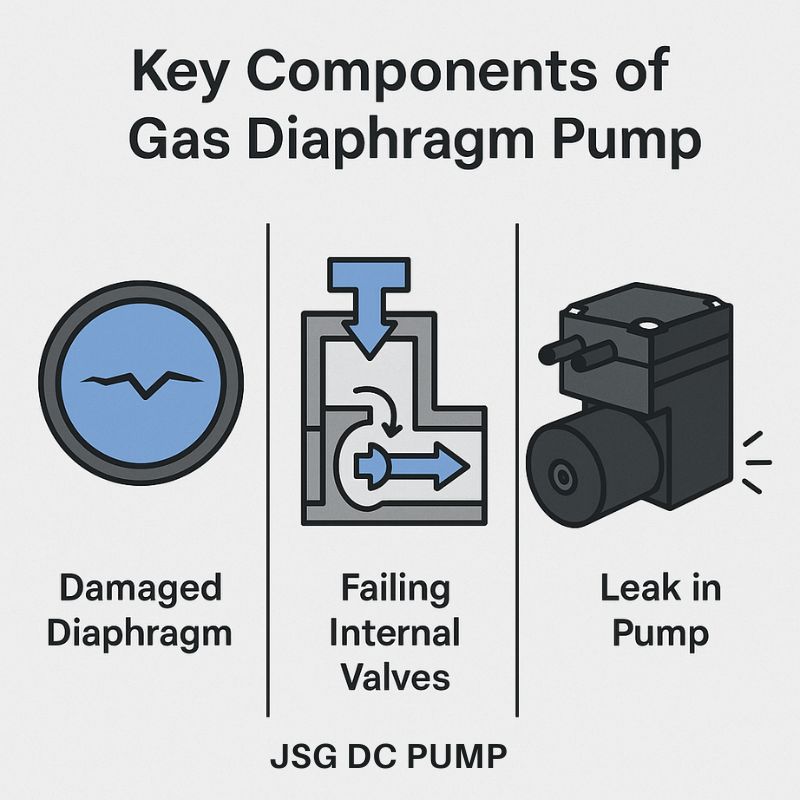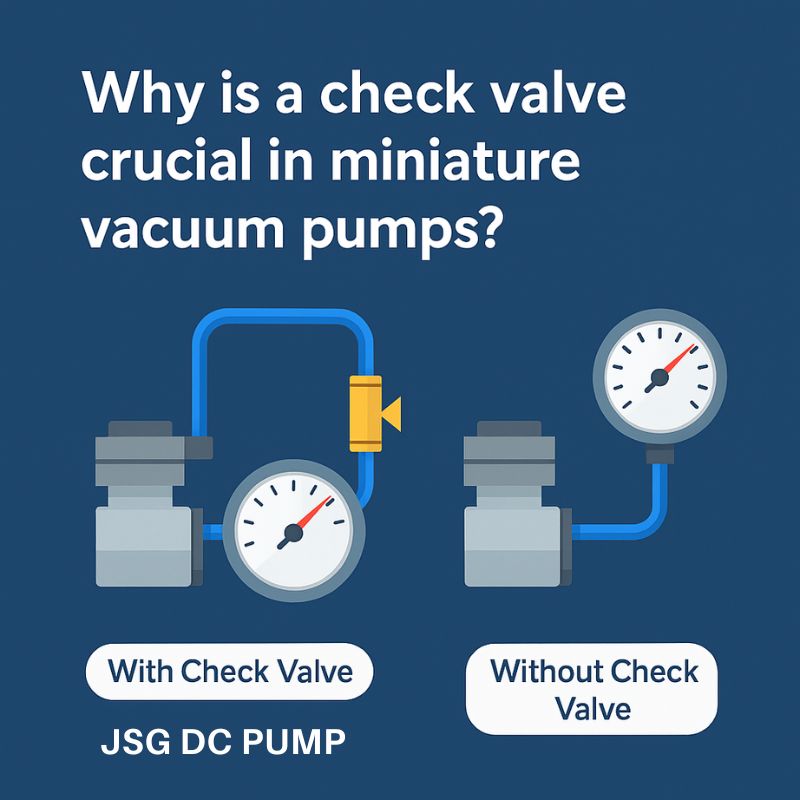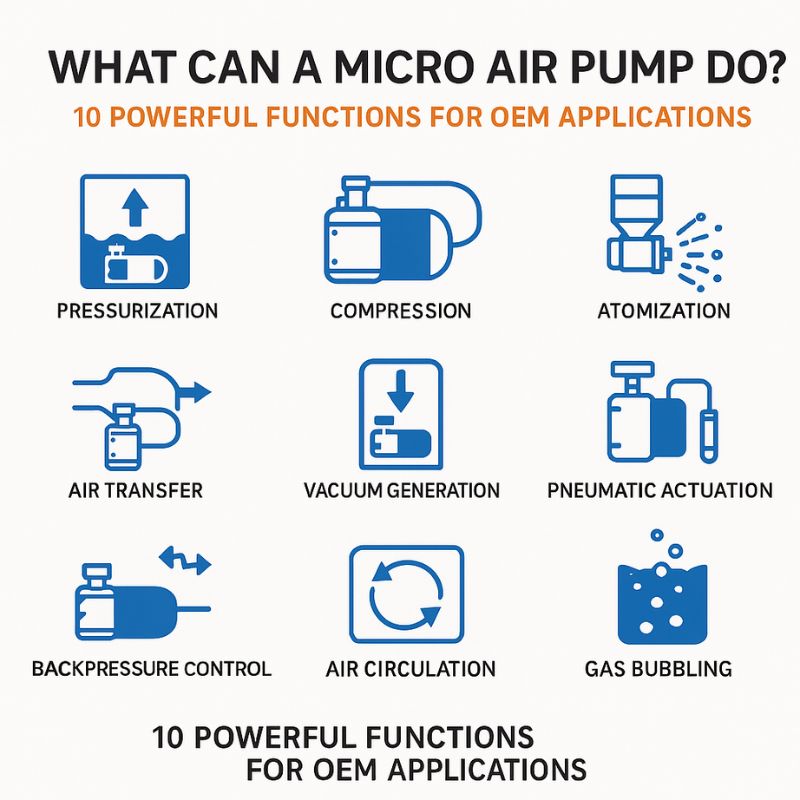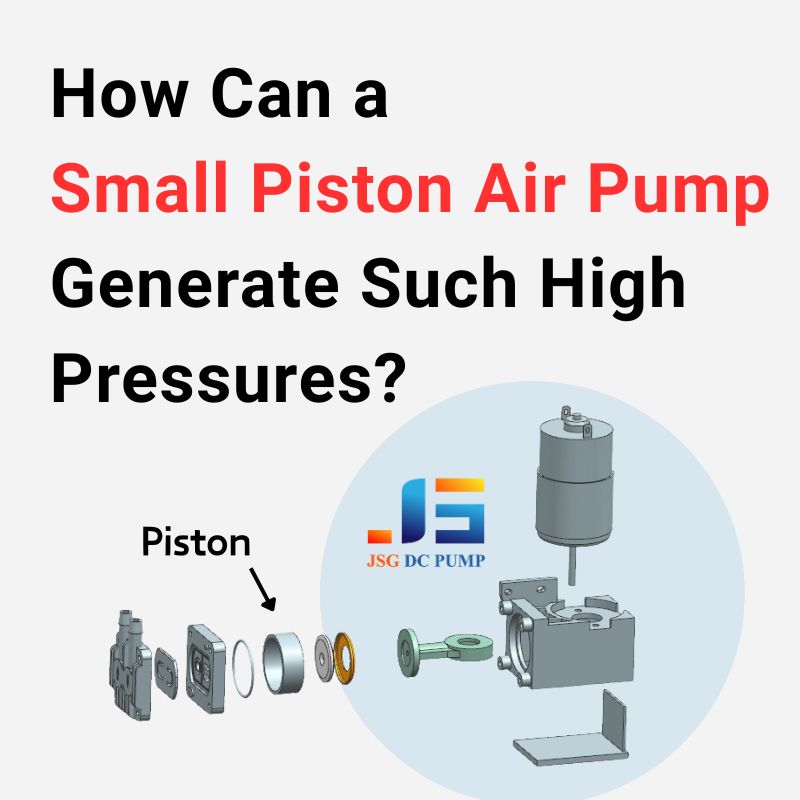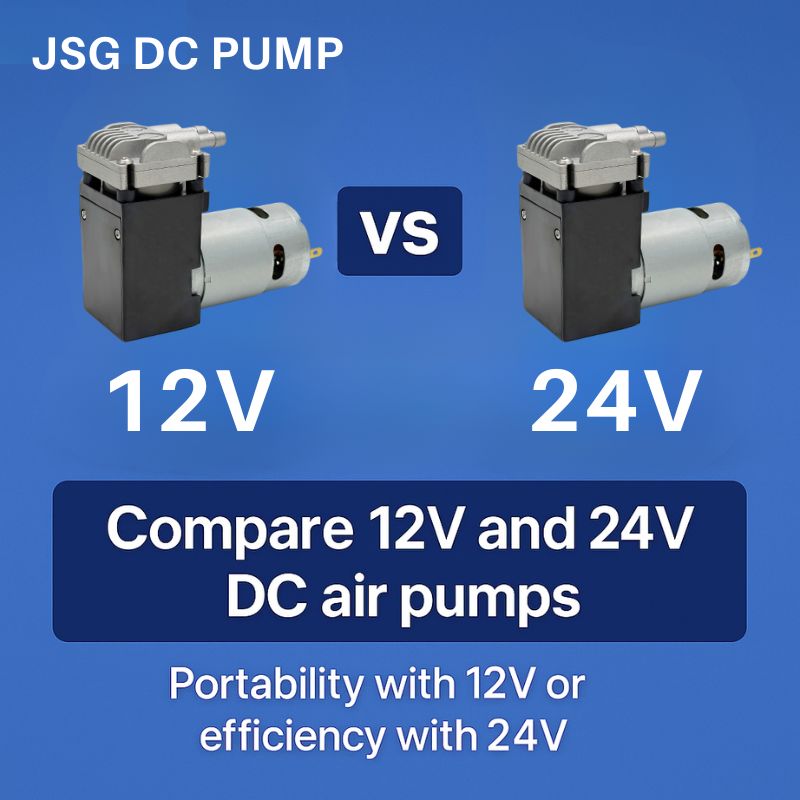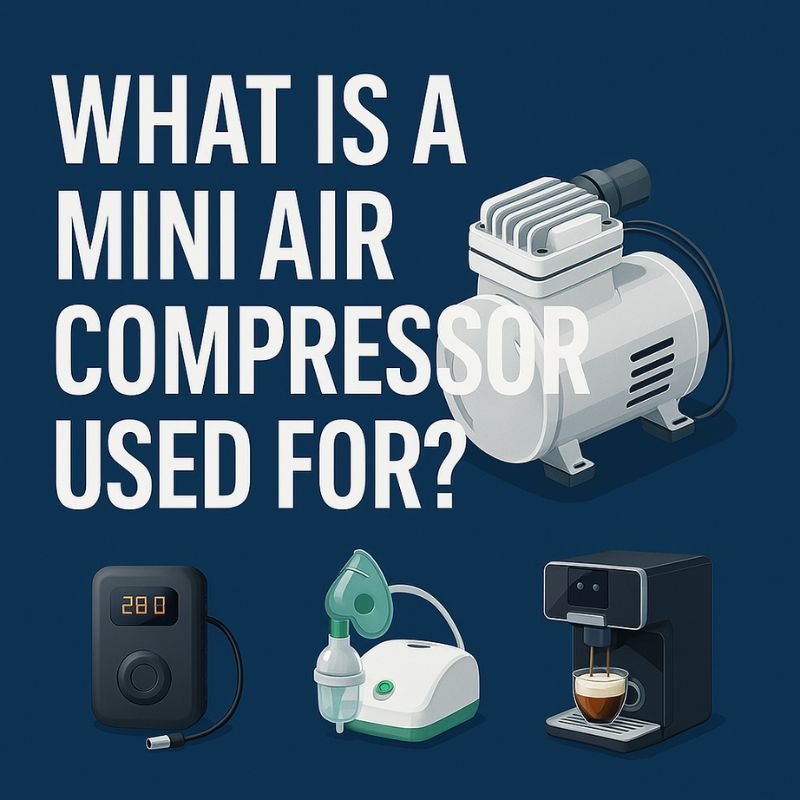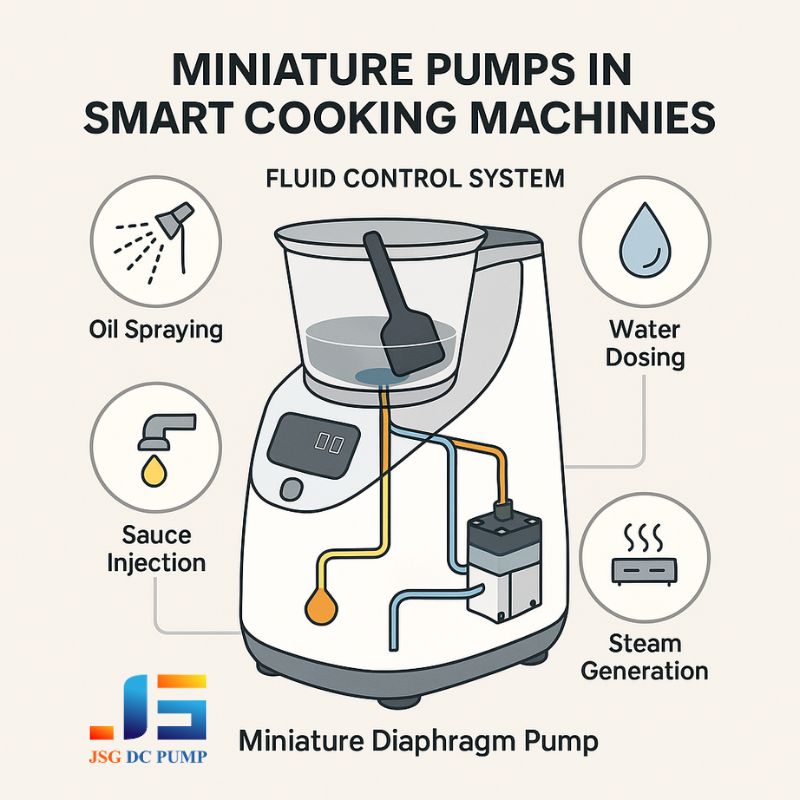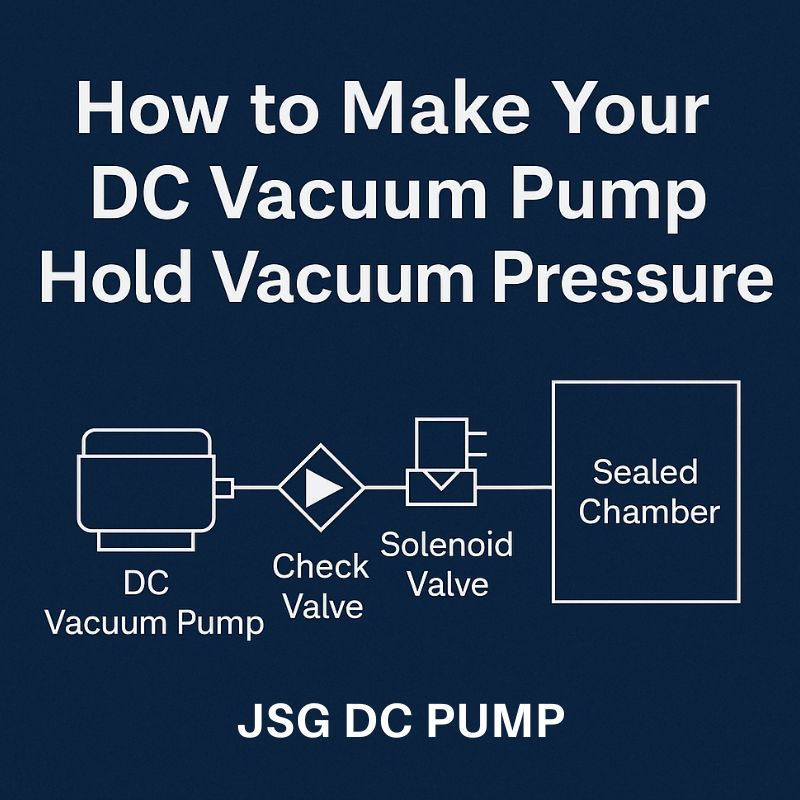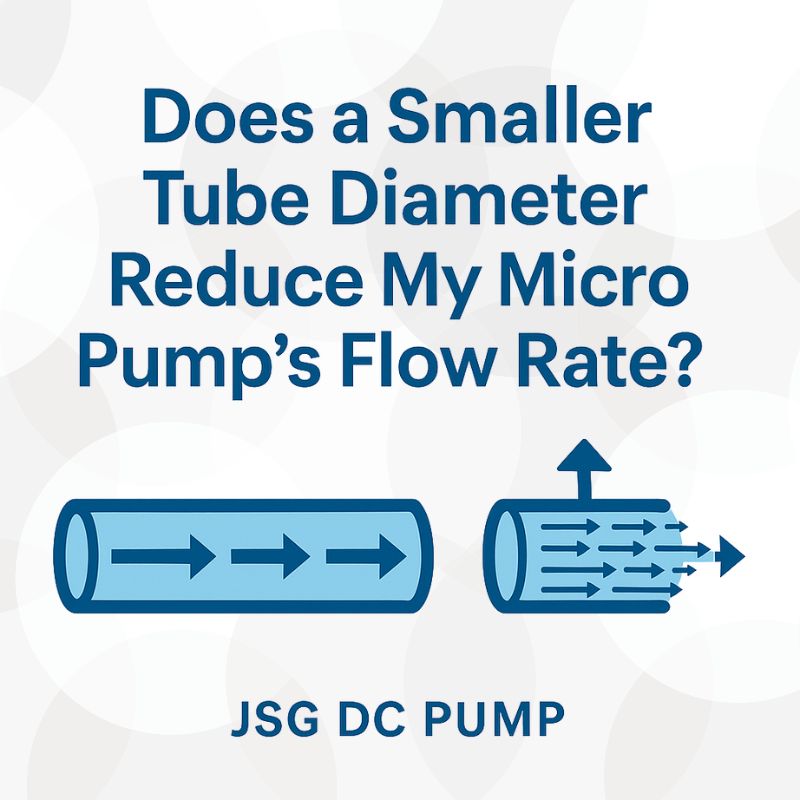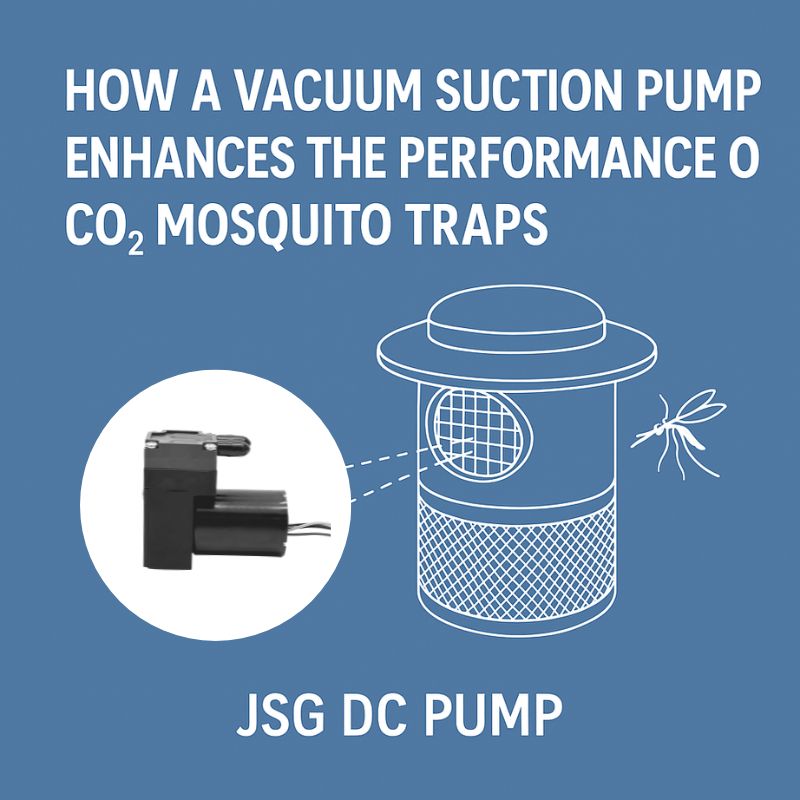Your gas diaphragm pump used to be powerful and consistent, but now it feels weak. The pressure or vacuum isn’t what it used to be, and your equipment is underperforming.
Performance loss in a gas diaphragm pump typically originates from one of three areas: a compromised diaphragm, failing internal valves, or leaks within the pump head or external system.
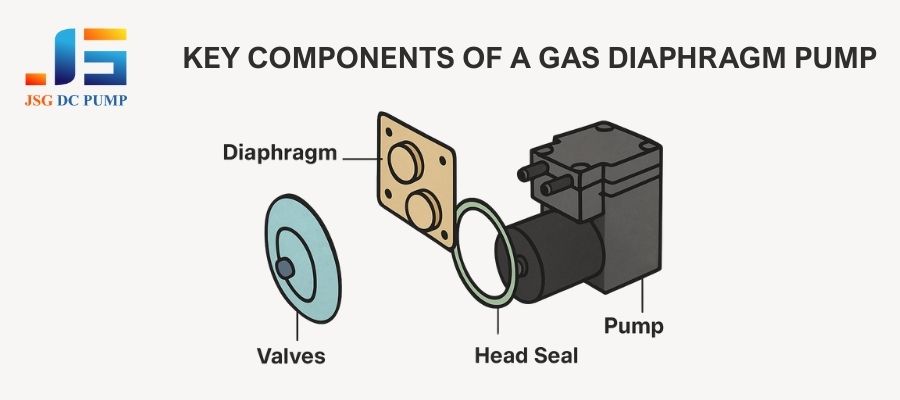
As an engineer at JSG DC PUMP, one of the most common support calls I get is about a pump that “isn’t working anymore.” The customer often assumes the motor has failed, but the motor is usually spinning just fine. The real issue is that the pump is no longer moving gas efficiently. A diaphragm pump is a simple, brilliant machine, but its performance depends on a perfect seal. Identifying where that seal has been broken is the key to fixing the problem. Let’s walk through the most common culprits, starting with the heart of the pump.
Is the diaphragm damaged or worn out?
You can hear the pump motor running normally, but there’s almost no airflow at the outlet. The pump makes noise but doesn’t seem to be doing any work.
A damaged diaphragm is the primary cause of severe performance loss. A tear, crack, or even age-related hardening prevents it from creating the necessary pressure difference to move gas.
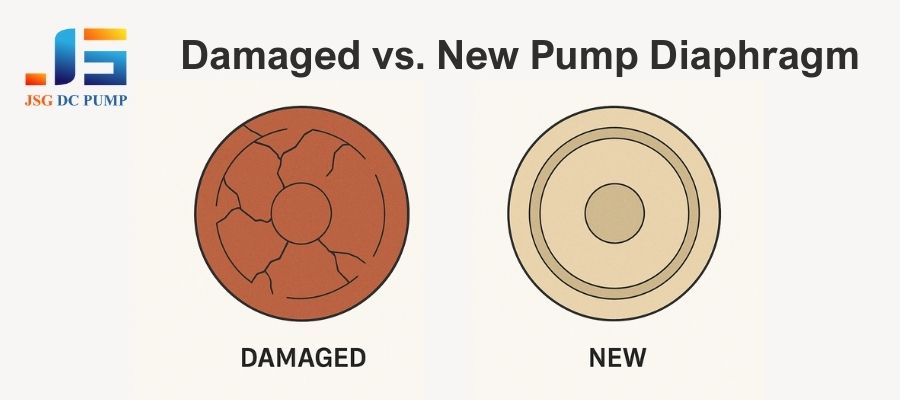
The diaphragm is a flexible membrane that creates the pumping action. It must form an airtight seal as it moves up and down. Any breach in this membrane allows air to leak past it instead of being pushed through the outlet valve. This is often the first component to check in a pump that is no longer performing.
| Type of Damage | Cause | Symptom |
|---|---|---|
| Tear or Puncture | Stress from over-pressurization or sharp debris in the gas stream. | A sudden and complete loss of pressure and flow. The pump makes noise but moves no air. |
| Hardening / Brittleness | Long-term exposure to certain chemicals, ozone, or UV light, or simply old age. | A gradual decline in performance. The pump feels weak because the stiff diaphragm has a shorter, less effective stroke. |
| Stretching / Deforming | Consistent operation at the very edge of its pressure limit, causing the material to lose its shape. | The pump can’t reach its maximum rated pressure or vacuum anymore. It “tops out” at a lower performance level. |
Have the internal valves failed?
Your pump can create some pressure, but it can’t hold it. Or, it can create a vacuum, but the vacuum level bleeds away as soon as the pump stops.
Leaky or stuck valves are a common cause of poor performance. These one-way gates control the direction of airflow; if they don’t seal properly, the pump cannot build or hold pressure effectively.
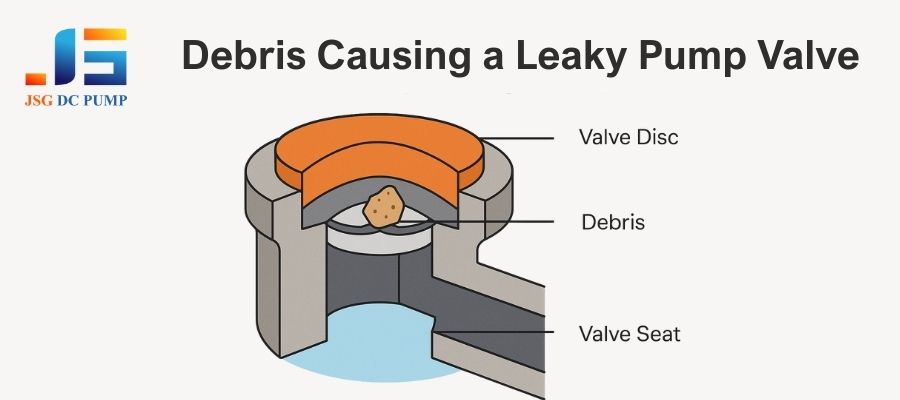
Every diaphragm pump head has at least two valves: an inlet valve and an outlet valve. On the downstroke, the inlet valve opens to let gas in. On the upstroke, the inlet valve closes and the outlet valve opens to push gas out. This sequence is critical. If either valve fails to seal completely, the pump will just push air back and forth instead of moving it through the system.
| Valve Problem | Cause | How It Degrades Performance |
|---|---|---|
| Debris Under Valve | Dust, particulates, or condensation from the air stream gets lodged between the valve and its seat. | This is the most common cause. The valve is physically held open, creating a constant leak path. Performance drops sharply. |
| Valve Sticking | The valve material becomes sticky due to chemical exposure or contamination. | The valve is slow to open or close, disrupting the pump’s timing and efficiency. It can cause erratic performance. |
| Material Wear | After millions of cycles, the flexible valve material can wear down or deform, losing its ability to create a tight seal. | This results in a gradual loss of maximum pressure/vacuum capability over the pump’s lifespan. |
Is there a leak in the pump head or fittings?
The diaphragm and valves look fine, but the pump is still underperforming. You suspect you’re losing pressure somewhere, but can’t pinpoint the source.
A leak in the pump head’s seal or at the tube fittings will compromise performance. The pump will draw in outside air instead of pulling exclusively from your system, reducing its effective vacuum or pressure.
The pump’s performance relies on being part of a closed, airtight system. Any leak, no matter how small, becomes a point of failure. A common and often overlooked culprit is the seal between the different parts of the pump head itself, or where you connect your tubing. An external leak has the same effect as an internal one.
| Leak Location | Common Cause | Diagnostic Test |
|---|---|---|
| Pump Head Seal | The screws holding the pump head together have loosened due to vibration over time, or the O-ring/seal has aged and compressed. | Carefully tighten the pump head screws. For a persistent issue, disassemble and inspect the internal head seal or O-ring for damage. |
| Tube Fittings | Using the wrong size tubing, pushing a tube on that is too loose, or a crack in the plastic fitting itself. | Apply soapy water to the fitting while the pump is running. If bubbles form, you have found your leak. |
| External System | A crack in a connected filter housing, a loose connection further down the line, or a leaking seal in the device itself. | Systematically isolate components. Test the pump by itself with a pressure gauge directly on the port to confirm it’s working. Then add components one by one. |
Is your filter or tubing blocked?
Your pump seems to be straining hard, but very little gas is coming out. You’ve checked for leaks, but the system still feels choked and unresponsive.
A blockage in the system, such as a clogged filter or a kinked tube, forces the pump to work against extreme resistance. This dramatically reduces airflow and can lead to motor overheating.
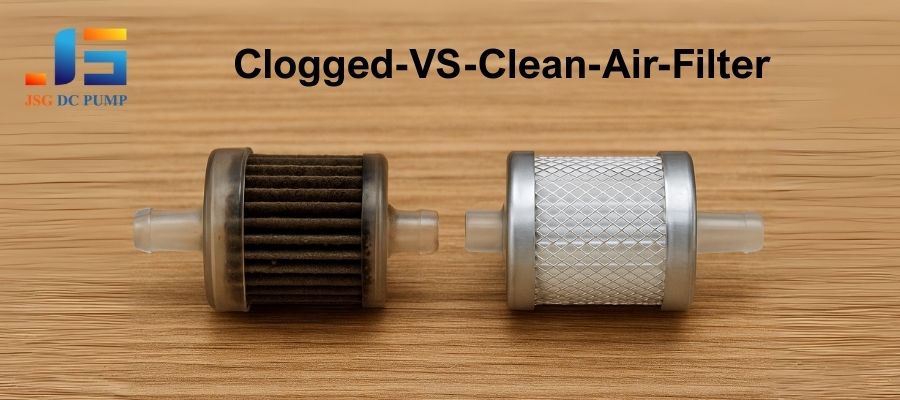
A pump can only move gas if the path is clear. A blockage acts like a closed valve, preventing flow. On the inlet side, this starves the pump of air, causing it to pull a very high vacuum but move nothing. On the outlet side, it forces the pump to work against its maximum pressure limit, which causes the motor to draw excess current, overheat, and produce zero flow. I’ve often seen customers replace a pump, only to find the problem was a ten-cent filter that was completely clogged with dust.
| Blockage Location | Symptom | Effect on Pump |
|---|---|---|
| Inlet Side | The pump sounds like it’s working hard, and a gauge on the inlet shows a very deep vacuum, but there is no output flow. | The pump is starved of air. It may run faster than normal (no load) but accomplishes no work. |
| Outlet Side | The pump motor strains, slows down, and gets very hot. There is no output flow. A gauge on the outlet would show maximum pressure. | This is dangerous for the motor. It is essentially a “stalled” condition that can lead to rapid burnout. |
Have incompatible chemicals attacked the pump materials?
You’re pumping a specific gas mixture, and over time, the pump’s performance has degraded significantly. The internal parts seem strangely sticky or brittle.
Exposing the pump’s diaphragm and valves to incompatible gases or vapors can cause the materials to swell, harden, or dissolve. This chemical attack destroys their ability to seal properly, leading to failure.
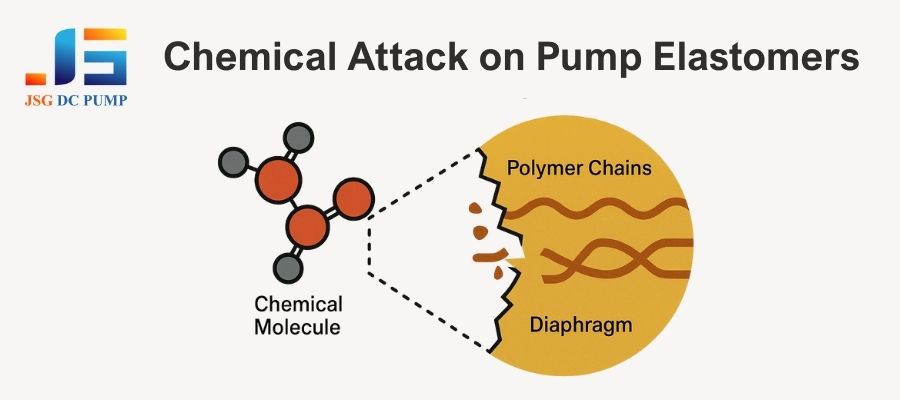
The diaphragm and valves are made from specific elastomers (types of rubber) chosen for their flexibility and durability. However, not all elastomers are created equal. A standard EPDM diaphragm, for example, is excellent for air and water vapor but will be quickly destroyed by oils or solvents. This is why it is critical to specify the exact gas constituents when selecting a pump. Choosing the wrong material leads to a slow, inevitable failure as the very heart of your pump dissolves.
Common Elastomers and Their Resistance
| Material | Good For | Terrible For |
|---|---|---|
| EPDM (Standard) | Air, Water, Ozone, Ketones | Oils, Gasoline, Solvents |
| FKM/Viton® | Oils, Fuels, Acids, Solvents | Ketones (e.g., Acetone) |
| Neoprene | Moderate resistance to oils and weather | Oxidizing acids, Esters |
When in doubt, always consult the manufacturer. At JSG, we can provide pumps with a variety of specialized materials to ensure a long life with your specific application.
Is the pump operating outside its ideal temperature range?
Your equipment works perfectly in the lab, but performance becomes erratic when used in a cold warehouse or a hot outdoor enclosure. The pump seems inconsistent.
Extreme temperatures affect pump performance. Cold can make diaphragms and valves stiff and less responsive, creating poor seals. Excessive heat can reduce motor efficiency and cause components to expand.
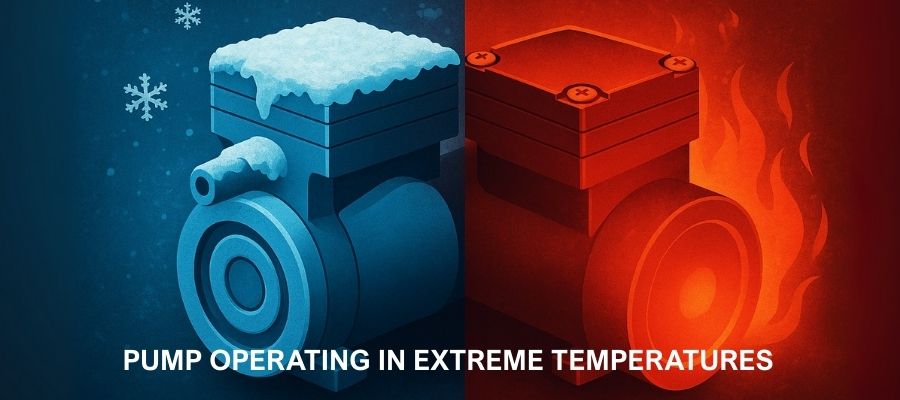
The elastomers in your pump have an ideal temperature window for operation. Outside this window, their physical properties change dramatically.
The Effect of Cold
When the temperature drops, elastomers become hard and less pliable. A stiff diaphragm won’t flex properly, leading to a shorter, less effective stroke. Stiff valves won’t seal quickly or tightly against their seats, causing internal leakage and low efficiency. The pump will seem weak and may struggle to start.
The Effect of Heat
Excessive heat poses a different set of problems. It can cause the motor’s electrical resistance to increase, making it run slower and draw more current. It also accelerates the aging process of the diaphragm and valves, making them brittle faster. In extreme cases, tight-tolerance parts can expand and bind, causing the pump to seize. Always operate within the pump’s specified ambient temperature range.
Is the motor failing or running too slowly?
The pump’s airflow is weak, and you notice the motor sounds sluggish or slower than it used to. The dc air pump body might also feel hotter than normal.
The pump’s output flow is directly proportional to motor speed. A problem with the power supply or the motor itself can cause it to run slow, directly reducing the volume of gas it can move.
While mechanical issues like diaphragms and valves are more common, you can’t rule out the motor. The pumping mechanism could be perfectly sealed, but if the motor isn’t running at its designed RPM, the performance will suffer. A slow motor means fewer pump cycles per minute, which translates directly to a lower flow rate.
| Cause of Slow Speed | Why It Happens | Solution |
|---|---|---|
| Low Voltage | The power supply is failing, unable to provide enough voltage under load, or the wires are too thin and causing voltage drop. | Check the voltage directly at the pump’s terminals while it is running. Ensure it matches the pump’s rated voltage (e.g., 12V or 24V). |
| Worn Motor Brushes (for brushed motors) | The carbon brushes that deliver power to the motor’s commutator have worn down with use. | The primary wear item in brushed DC motors. This is an end-of-life failure. The pump needs to be replaced. |
| Motor Overheating | The motor is too hot due to poor ventilation or high ambient temperatures, causing internal resistance to increase. | The increased resistance slows the motor and can lead to eventual burnout. Improve cooling or reduce the duty cycle. |
Conclusion
Diagnosing performance loss is a process of elimination. Start with mechanical wear, check for system issues like leaks and blockages, and consider environmental factors like chemicals and temperature before suspecting the motor itself.
At JSG DC PUMP, we specialize in high-quality, oil-free micro diaphragm pumps engineered for long-lasting performance. If you’re experiencing performance issues or need a custom OEM solution, our technical team is ready to help you pinpoint the cause and recommend the optimal solution.
📩 Contact us today: admin@dc-pump.com


